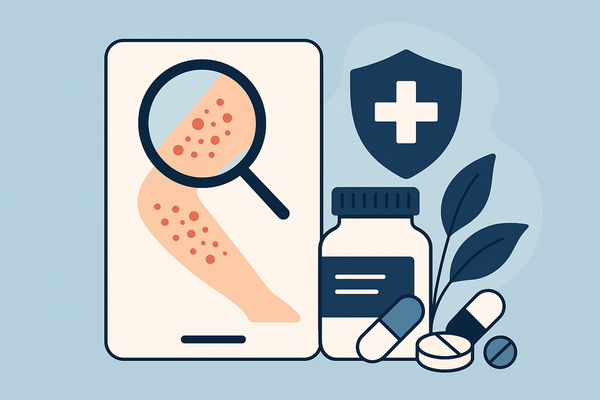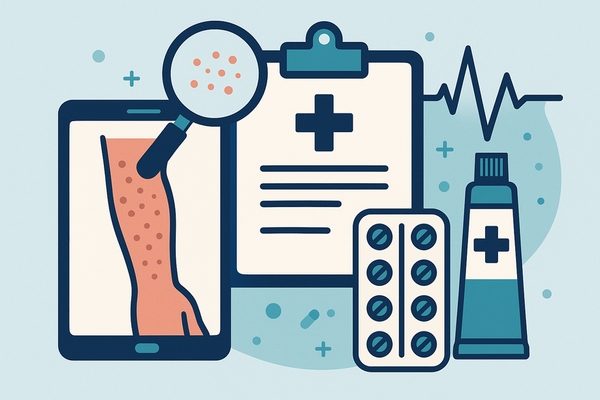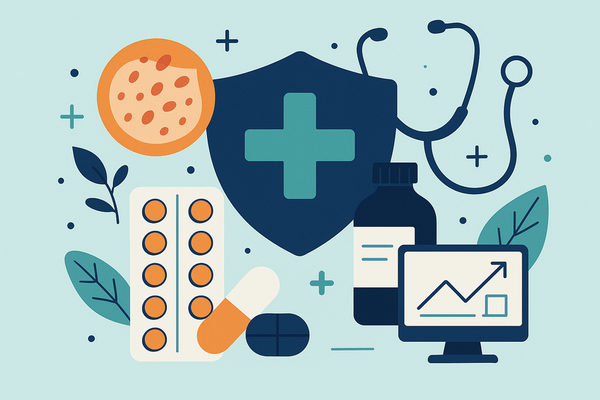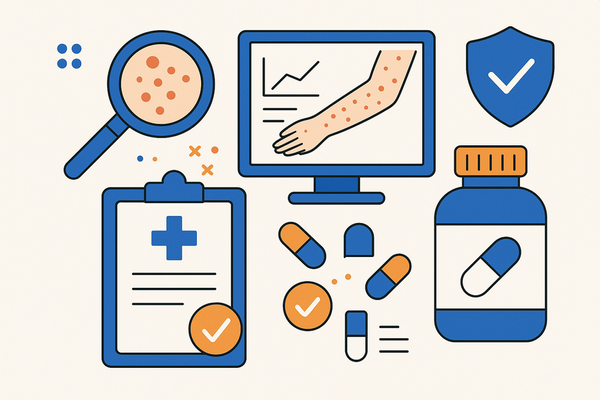Medication Rash Treatment: Your Complete Guide to Identifying, Managing, and Preventing Drug-Induced Rashes
Discover expert tips on medication rash treatment, including how to identify, manage, and prevent drug-induced rashes effectively.
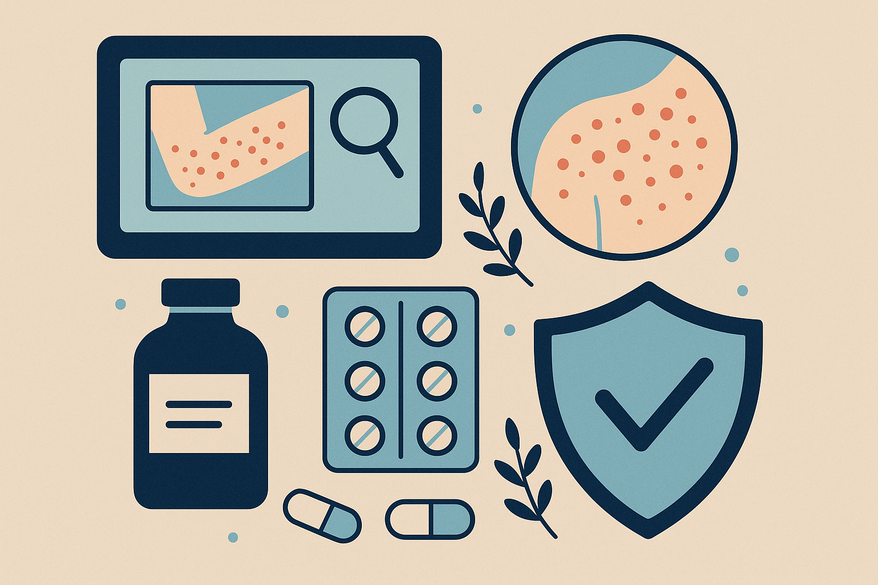
Estimated reading time: 8 minutes
Key Takeaways
- Early recognition of drug-induced rashes can prevent serious complications.
- Treatment ranges from home remedies and OTC antihistamines to prescription steroids and emergency care.
- Self-care, including gentle skin care and irritant avoidance, supports faster healing.
- Be aware of red-flag symptoms (e.g., breathing difficulty, widespread peeling) and seek immediate help.
- Prevent future reactions by communicating allergies, reviewing medications, and using medical alert tools.
Table of Contents
- What Is a Medication-Induced Rash?
- Causes and Risk Factors
- Signs and Symptoms to Spot
- Medication Rash Treatment Options Overview
- 4.1 Home Remedies & OTC Treatments
- 4.2 Professional & Prescription Therapies
- When to Use Each Approach
- Self-Care Strategies
- When to Seek Immediate Medical Help (Red Flags)
- Prevention of Medication Rashes
- Conclusion and Key Takeaways
- Call to Action & Further Resources
1. What Is a Medication-Induced Rash?
A medication-induced rash, or drug rash, is an adverse skin reaction triggered by immune-mediated or non-allergic responses to a prescription or over-the-counter medication. Allergy-based (Type I–IV) reactions involve antibodies or T-cells attacking drug metabolites, while non-allergic responses stem from direct mast cell activation or metabolite buildup. Clinicians broadly refer to any skin eruption from a drug as a drug rash.
Example: A patient on penicillin develops itchy, red hives due to histamine release within days of starting treatment.
2. Causes and Risk Factors
Certain drugs and patient characteristics increase the chance of developing a medication rash.
- Common Drug Classes: Antibiotics (penicillins, cephalosporins, sulfa drugs), anticonvulsants (phenytoin, carbamazepine), NSAIDs, allopurinol, antiretrovirals.
- Allergic vs. Non-Allergic: Hypersensitivity reactions may occur after a single dose; non-allergic reactions include direct mast cell degranulation or phototoxic effects.
- High-Risk Groups: Personal/family history of drug allergies, polypharmacy, weakened immunity (HIV, chemotherapy, autoimmune conditions).
3. Signs and Symptoms to Spot
- Timing: Immediate (0–48 hrs) for urticaria/angioedema; delayed (1–2 weeks) for maculopapular eruptions.
- Immediate Allergic Rashes: Raised, red welts (hives), deeper swelling around eyes/lips/throat.
- Delayed Rashes: Flat or slightly raised pink/red bumps spreading from torso to limbs, possible peeling or scaling.
- Warning Signs: Intense itching, burning, swollen lips/tongue/face, blood-filled blisters, fever or systemic symptoms.
- Red Flags: Mucous membrane involvement, widespread peeling (>10% BSA), target lesions (SJS/TEN).
4. Medication Rash Treatment Options Overview
4.1 Home Remedies & OTC Treatments
- Antihistamines: Cetirizine, loratadine (non-drowsy); diphenhydramine (nighttime relief).
- Topical Soothers: Calamine lotion; 1% hydrocortisone cream.
- Gentle Skin Care: Fragrance-free cleansers; hypoallergenic moisturizers; cool compresses; loose cotton clothing.
- Drug Discontinuation: Stop suspected medication under provider guidance; taper if necessary.
- Tip: A cold colloidal oatmeal bath calms widespread itching and inflammation.
4.2 Professional & Prescription Therapies
- Topical Corticosteroids: Medium-potency (e.g., triamcinolone acetonide).
- Oral Corticosteroids: Short-course prednisone taper (5–14 days) for severe inflammation.
- Advanced Care: IVIG, immunosuppressants (cyclosporine), burn-unit wound care for SJS/TEN.
- Epinephrine: Immediate IM injection for anaphylaxis or severe angioedema.
5. When to Use Each Approach
- Mild Rash: OTC antihistamines, topical calamine/hydrocortisone, discontinue suspect drug after medical advice.
- Moderate/Persistent Rash: Medical evaluation for prescription topical or oral steroids.
- Severe Symptoms: Emergency services or hospital admission; EpiPen for suspected anaphylaxis.
6. Self-Care Strategies
- Discontinue Suspect Medication under provider guidance—never stop critical drugs alone.
- Avoid Irritants: No harsh soaps, scented lotions, or scratching.
- Monitor Progression: Daily photos in consistent lighting; log onset, itch level, new symptoms.
- Hygiene & Infection Prevention: Lukewarm baths, gentle cleansers, pat dry, fresh sheets/clothes daily.
7. When to Seek Immediate Medical Help (Red Flags)
- Difficulty breathing or swallowing
- Swelling of face, lips, tongue, or throat
- Extensive blistering or peeling (>10% BSA)
- Mucous membrane involvement (eyes, mouth, genitals)
- High fever (>101.5°F) or profound malaise
8. Prevention of Medication Rashes
- Communicate Drug Allergies: Share any past reactions or family history with providers.
- Review Medication Histories: Check ingredient lists in combination pills and topicals.
- Medical Alert Tools: Wear jewelry or carry an allergy card listing known drug allergens.
- Close Monitoring: Track skin changes daily for the first two weeks on new drugs; use a medication diary or rash-tracking app.
To simplify tracking and analysis, consider using an AI-powered skin analysis tool like Rash Detector to upload daily skin photos and receive instant insights.
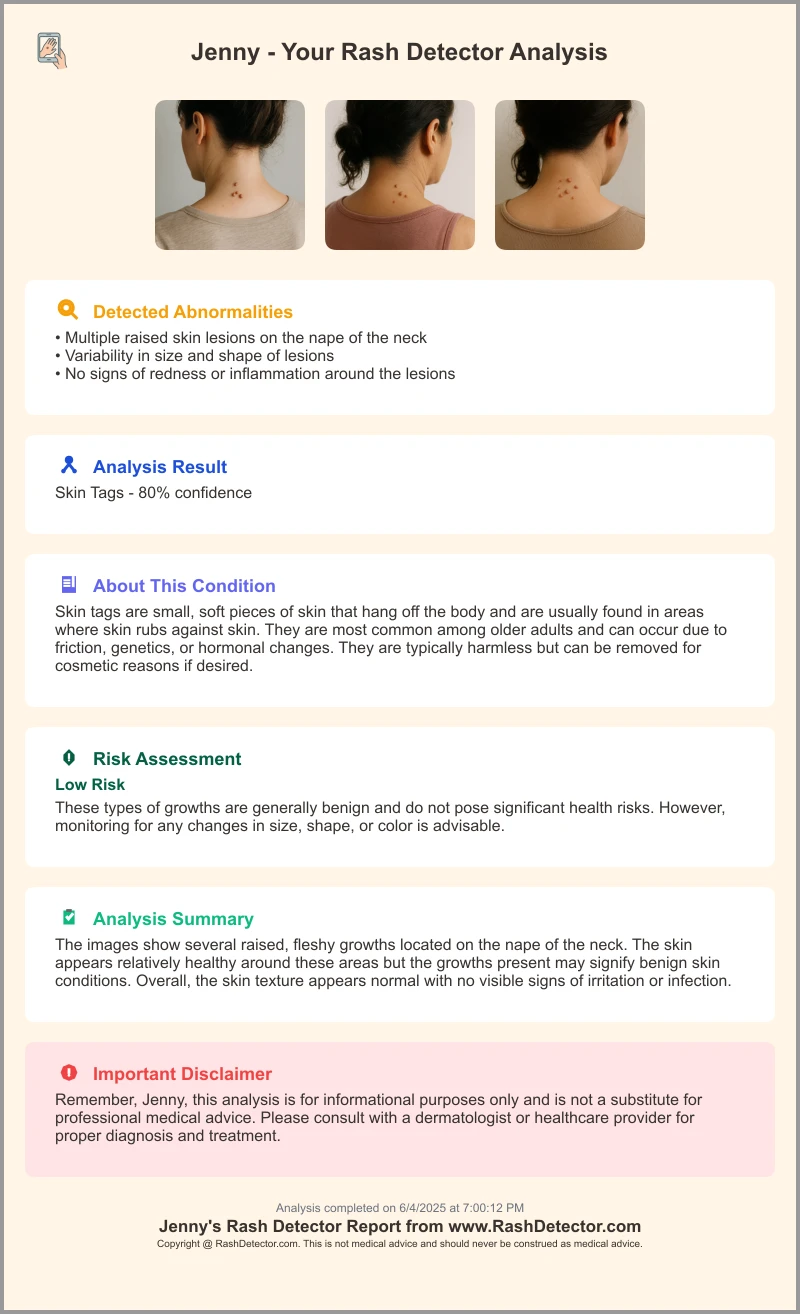
Conclusion and Key Takeaways
Prompt identification and treatment of medication-induced rashes are vital. Remember to:
- Watch for timing, rash type, and systemic signs.
- Use home remedies, OTC antihistamines, prescription steroids, or emergency care as needed.
- Employ self-care strategies to support healing.
- Recognize red-flag symptoms and seek immediate help.
- Prevent future reactions by communicating allergies and reviewing medications.
Call to Action & Further Resources
FAQ
- What causes a medication-induced rash? It can result from allergic hypersensitivity (immune response) or non-allergic mechanisms like direct mast cell activation.
- How can I tell if my rash is drug-related? Look for timing (immediate vs. delayed), characteristic rash types (hives vs. maculopapular bumps), and systemic symptoms like fever.
- Can I treat a drug rash at home? Mild rashes often respond to OTC antihistamines, topical calamine or hydrocortisone, and gentle skin care under medical advice.
- When should I see a doctor? Seek professional care if the rash spreads, is persistent, involves systemic symptoms, or shows red-flag signs like breathing difficulty or widespread peeling.


